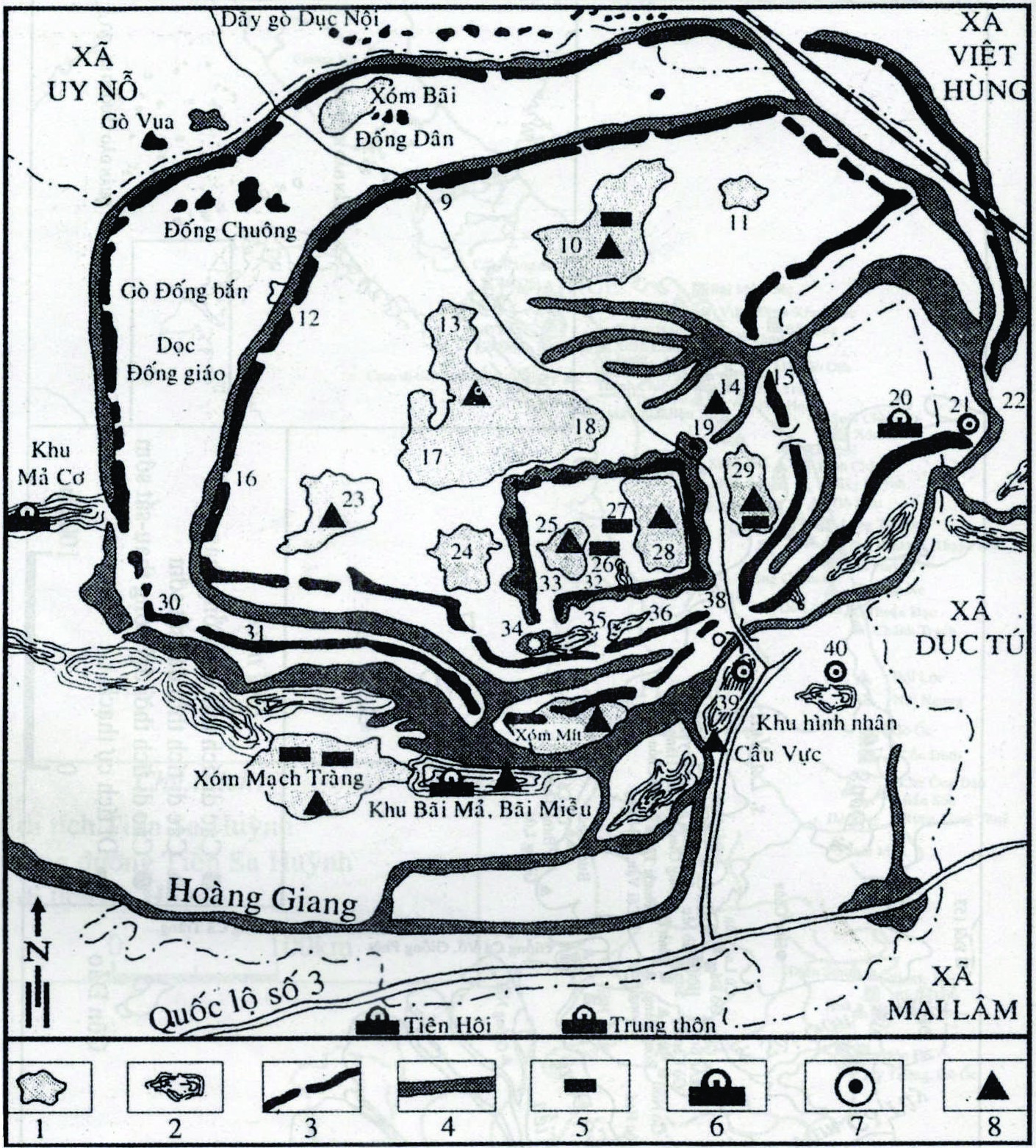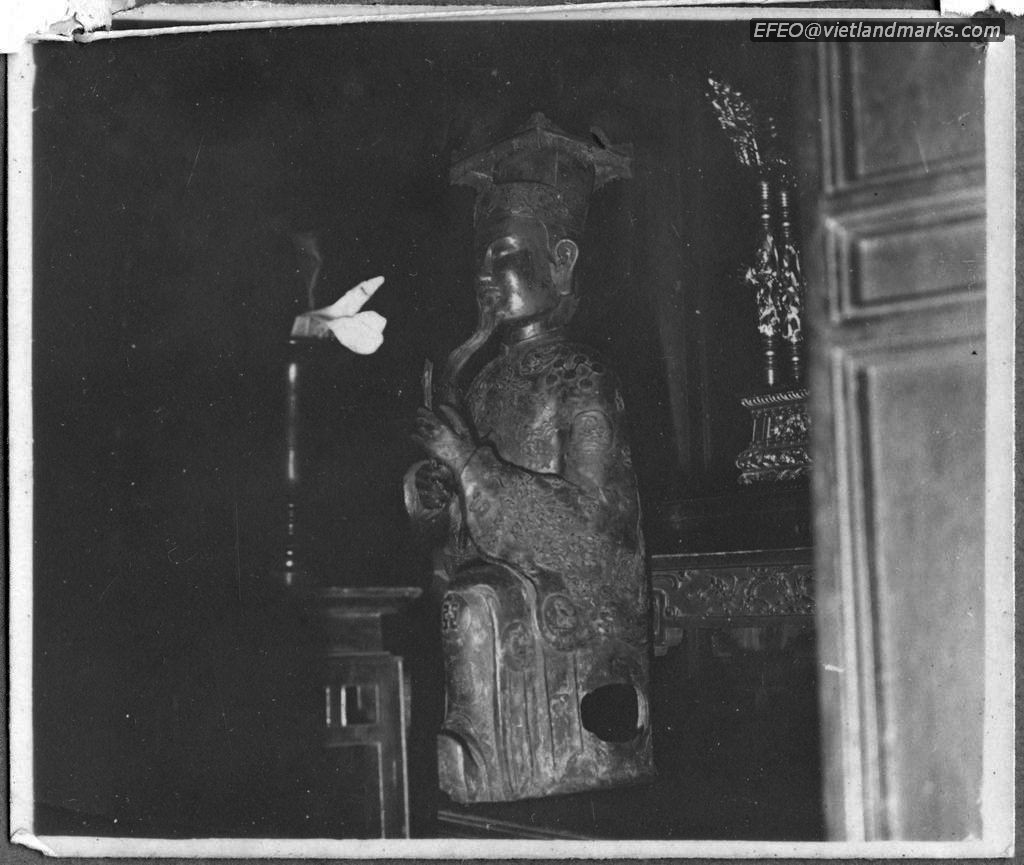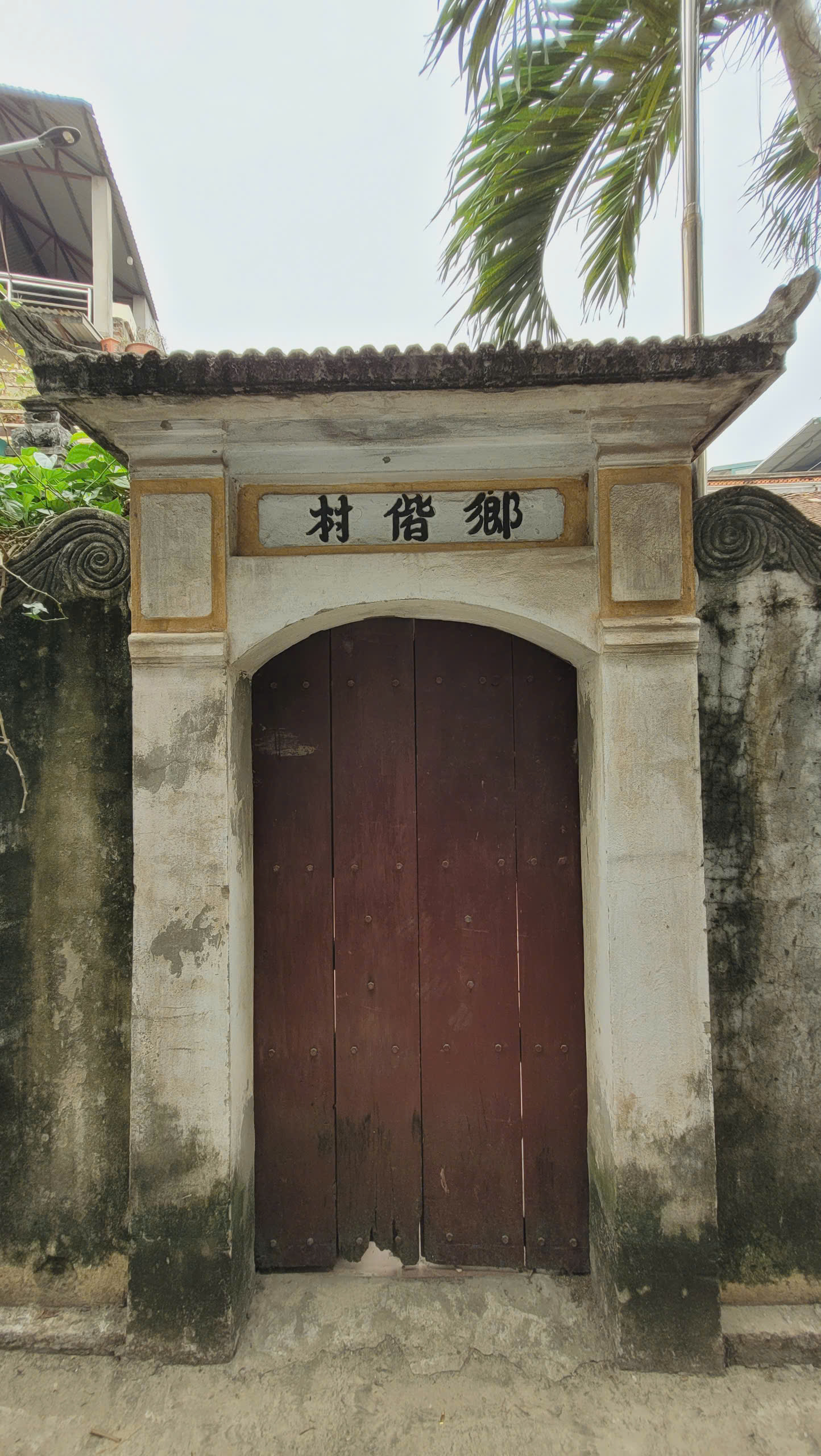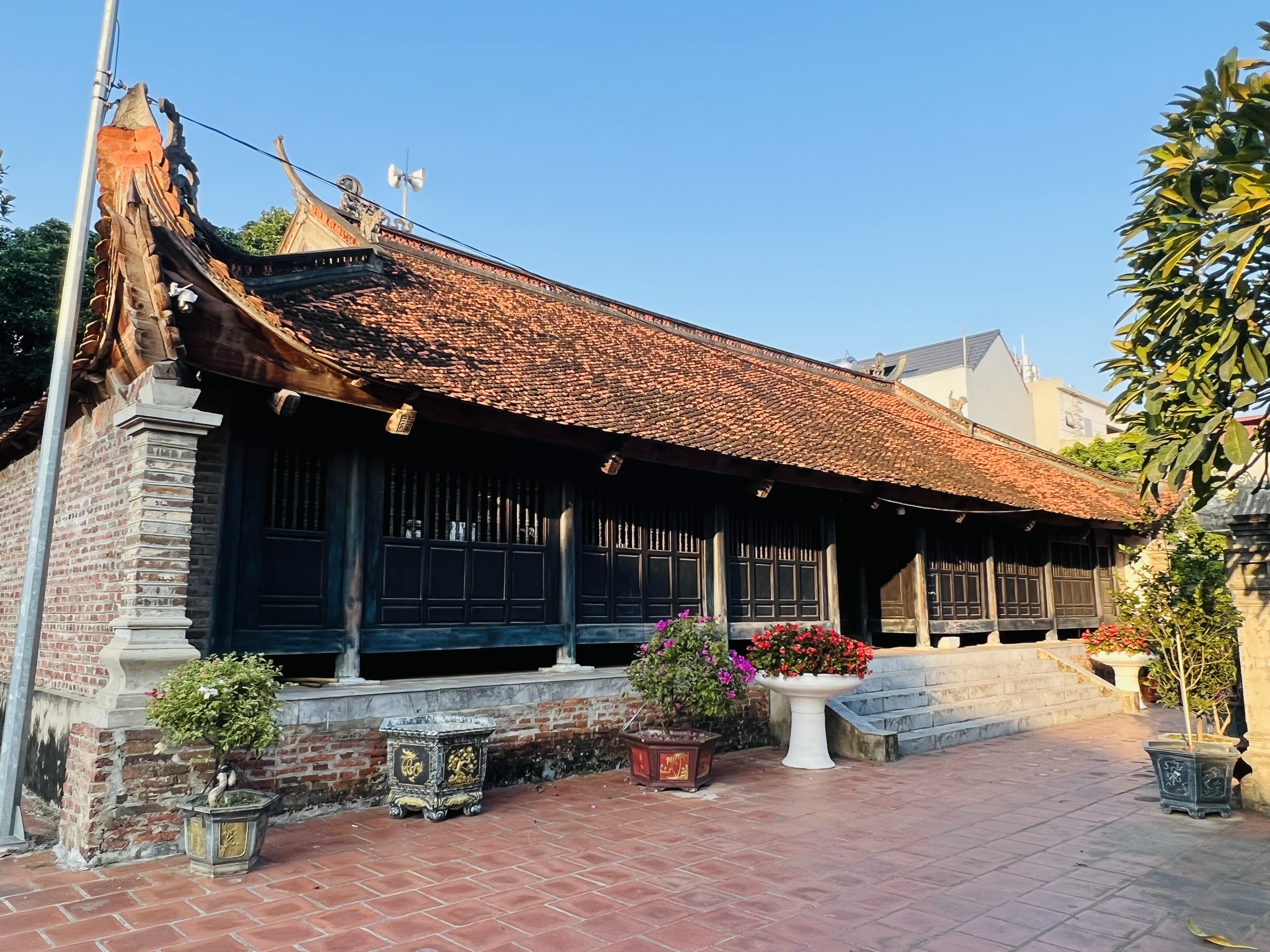
The historical and cultural values of the pair of stone dragons handrails in the Thượng (Upper) temple (Cổ Loa) are shown in the following aspects:
In relation to the overall architecture of the Thượng temple, the handrails have a particularly important meaning. According to the legends and in the folklore of Co Loa for many generations, the temple was built on top of the dragon's head. No one knows since when, the terrain of the Upper Temple has had the shape of a giant dragon's head. The top of the dragon's head is the sanctuary, from there it gradually slopes down to the dragon's mouth. In the lower dragon yard, there are two dragon eyes. If according to this legend, the "dragon head" terrain was built at the same time as the construction of the architecture in the temple area that still exists today. Thuong Temple is the "Chinh Phap Dien", which is said to be the Royal Palace of the Au Lac Dynasty. The existence of Thuong Temple has a history of thousands of years, in addition to historical, architectural and artistic values, there are also intangible cultural values, when Thuong Temple is the center of Co Loa festival - a festival honoring King An Dương.
 Thuong Temple - the center of Co Loa festival
Thuong Temple - the center of Co Loa festival
Ideological and artistic values: Ideological values are expressed in the symbolism of the images and motifs on the handrails. In Eastern culture, the dragon is the leading sacred animal in the four sacred animals, with important feng shui meaning. The dragon is an animal with the power to create the seasons, creating a balance of yin - yang energy, of earth - water - air - wind. The special feature of the pair of handrails is the combination with three stone incense sticks in front ("Thien Thach Tru" - three pillars transferring the biological source of heaven to earth). According to spiritual and philosophical concepts, the outdoor stone incense tree is the connection between heaven and earth or the underworld - the living world - the heavenly pillar between heaven and earth, higher, it is the extremely humane meaning, praying for favorable weather, praying for good things to come to human life. Therefore, the pair handrails at the Thượng Temple is a symbol of the energy of heaven and earth, an image representing the king and the power of the king - King An Dương, a sacred object that brings vitality to a sacred place like the temple to worship the King.
 Pair of handrails and three stone incense trees
Pair of handrails and three stone incense trees
The dragon statue with strict standards on the structure of the head, with a high protrusion to show the dragon's self-generating ability has demonstrated the strict standards of Confucianism.
MANAGEMENT DEPARTMENT OF CỔ LOA VESTIGE SITE








